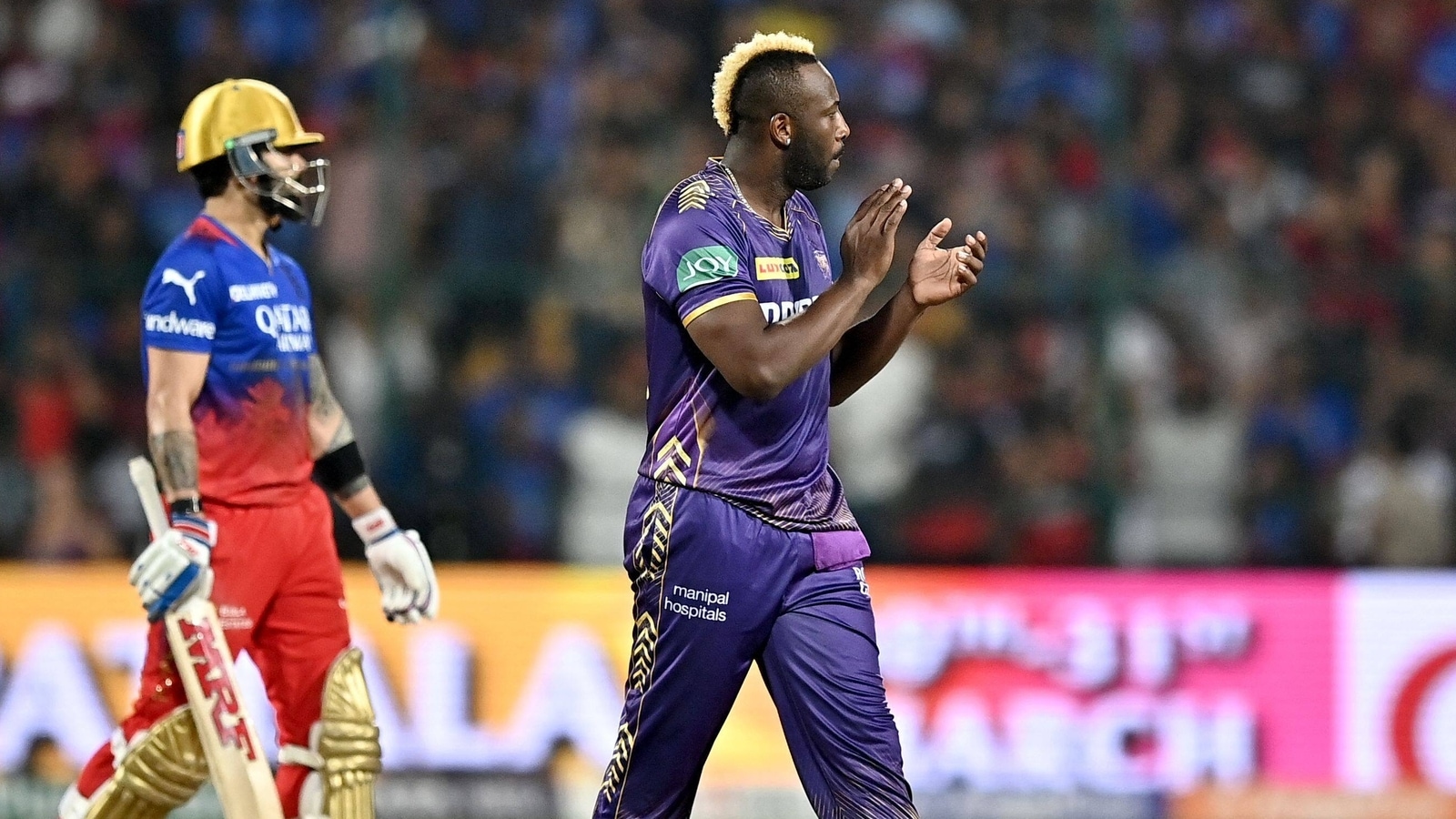A slower ball lives up to its name by taking longer to reach the batter, causing uncertainty and making it challenging to find the right hitting rhythm. However, within the realm of slower deliveries, factors such as trajectory, length, bounce, and seam movement or pitch deviation add further complexity. Batsmen must react within split seconds to variations in pace. The question arises: have modern batters fully embraced the art of change of pace?
The importance of change of pace was strikingly evident during the Kolkata Knight Riders (KKR) versus Royal Challengers Bengaluru (RCB) match when Andre Russell outfoxed Virat Kohli and Glenn Maxwell, two prolific hitters, with his well-disguised slower balls. Russell’s strategic brilliance unfolded in the ninth over of RCB’s innings, where he bamboozled Kohli and Cameron Green with slower balls, eventually dismissing Green with a cleverly angled delivery. In the following over, Russell continued to deceive Kohli and Maxwell with a series of slower deliveries, showcasing his mastery of change of pace.
By conceding only nine runs in 12 balls and creating disarray among the opposition batsmen, Russell exemplified the effectiveness of change of pace at the highest level. KKR captain Shreyas Iyer acknowledged Russell’s impact, emphasizing how his performance influenced the team’s overall strategy, leading to a successful victory in Bengaluru.
Implementing change of pace is a strategic imperative, particularly on Indian pitches known to slow down over time. However, pitch conditions can vary, as noted by RCB captain Faf du Plessis, who observed a two-paced nature at the Chinnaswamy Stadium during different phases of the match. This variability necessitates astute communication and adaptability, as teams navigate through the challenges posed by uneven pitch behavior.
The significance of change of pace was further underscored during key moments of the match, such as Vijaykumar Vyshak’s precise bowling display and Harshit Rana’s disruptive slowers that restricted the opponent’s scoring opportunities. The evolving dynamics of T20 cricket signal a shift towards leveraging slower deliveries not just in the slog overs but also throughout the innings, compelling batters to recalibrate their approach and take calculated risks.
As teams vie for early dominance and quicker run accumulation, the role of slower balls in disrupting batting flow and inducing errors gains prominence. Instances like Harshal Patel’s strategic use of slow bouncers against marquee batters and Mustafizur Rahman’s match-winning performance underscore the potency of change of pace as a game-changing tactic in the IPL.
In a tournament defined by intense competition and razor-thin margins, the mastery of change of pace emerges as a pivotal skill set for bowlers to outfox batters and turn the tide in their favor. As the IPL unfolds, the strategic nuance of slower deliveries is poised to play a defining role in shaping outcomes and determining the fate of teams in the quest for T20 supremacy.




